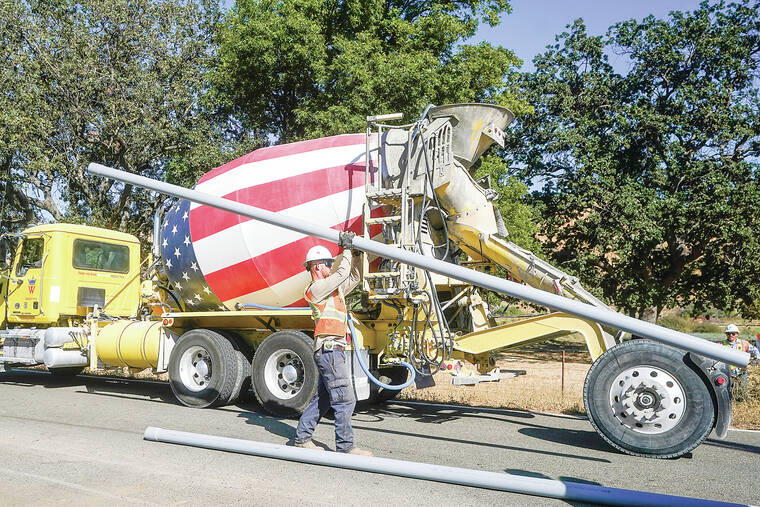PG&E’s plan to bury power lines and prevent wildfires faces opposition because of high rates
VACAVILLE, Calif. (AP) — Pacific Gas &Electric — one of the nation’s largest utilities whose equipment has sparked some of California’s deadliest wildfires — wants to bury power lines in some of its most at-risk areas to prevent destructive blazes like the 2018 Paradise fire that killed 85 people.
But state regulators are balking at the utility’s plan because it would take too long and cost $5.9 billion. The company’s customers — who already have some of the highest rates in the country — would have to pay for it.
ADVERTISING
Regulators want PG&E to put a protective cover over many of its overhead power lines instead of burying them. The cover approach is cheaper, but riskier. PG&E says burying a power line reduces the chance it will start a wildfire by 99% because it can’t be blown down by wind storms. The protective cover, which would better insulate the power line should it fall to the ground, would reduce that chance by 62%.
“We’re not going to live with 35% risk,” said PG&E CEO Patti Poppe, who was rounding down in her assessment. “Who wants to get on a plane that has a 35% chance of crashing?”
PG&E, which filed for bankruptcy protection in 2019 after it faced more than $30 billion in damages for wildfires started by its equipment, is trying to convince regulators that its burying plan is better. The company filed its plan with state regulators last year.
The California Public Utilities Commission, whose members are appointed by Gov. Gavin Newsom, is scheduled to decide the issue next month. PG&E will make it’s case in person before the commission on Wednesday.
What PG&E wants to do is unprecedented in both scale and speed. It’s plan to bury 2,000 miles (3,219 kilometers) of power lines is part of a broader goal of putting 10,000 miles (16,093 kilometers) underground over the next decade. The case is being closely watched, not just in California but throughout the country as more utilities weigh the risks versus the cost of burying power lines.
Most of the nation’s power lines are above ground because its cheaper to do it that way. But more utilities have been burying power lines in response to bigger and more destructive natural disasters. In Florida, where hurricanes are more of a threat than wildfires, about 45% of Florida Power and Light’s distribution system is underground, according to the company’s website.


